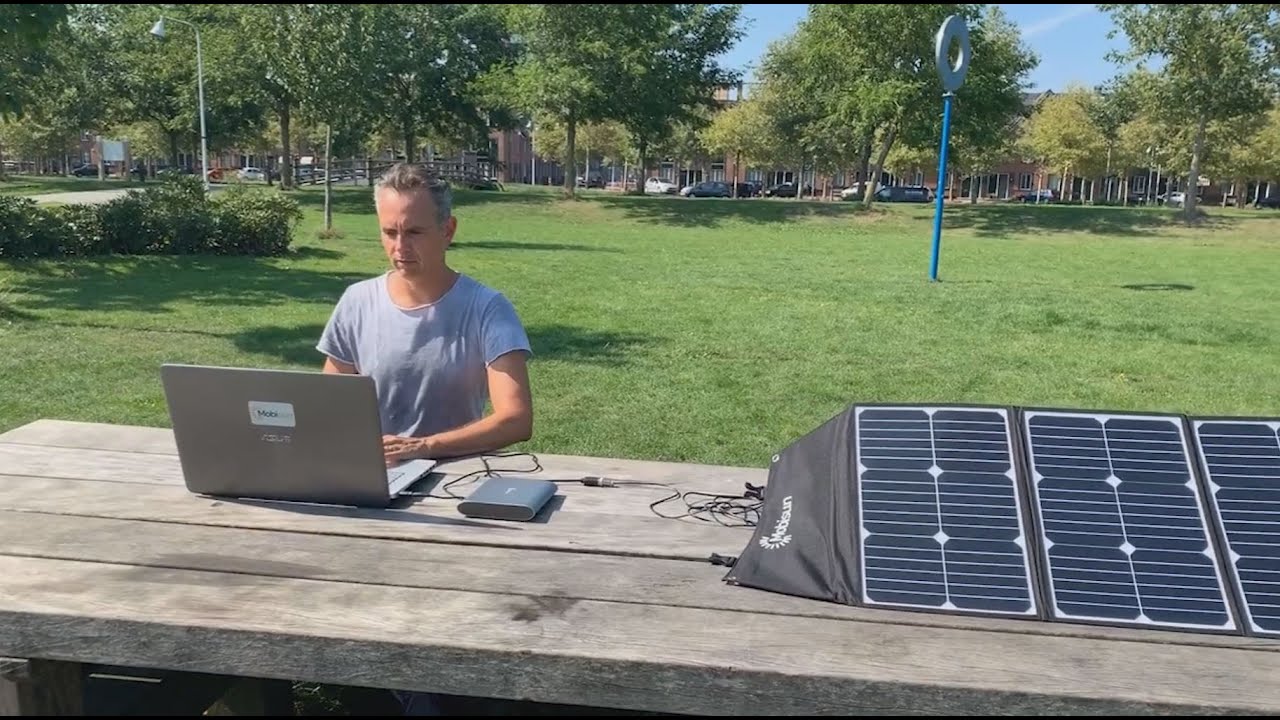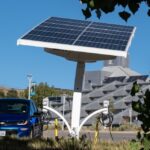Can a Solar Panel Charge a Laptop?
Many people use solar panels to power their houses, but can they also be used to charge laptop computers? In this blog, we’ll look at the science behind solar panels, how much energy a laptop uses, and if solar panels can charge a laptop properly. We will also go over how to charge a laptop using solar panels, the restrictions of utilizing solar panels for charging, and other things to think about while using solar panels for charging. This blog will give you the knowledge you need to make an informed decision about utilizing solar panels to charge your laptop, whether you are an ardent camper, outdoor lover, or simply seeking an eco-friendly solution to power your gadgets.
Reliable rule is working hard to improve better reading experience .stick with us to explore this arcticle
How much energy does a laptop require?
When assessing if a solar panel can charge a laptop, it’s critical to understand how much energy a laptop consumes. In this part, we’ll go over the average energy usage of a laptop, laptop battery capacity, and the time it takes to charge a laptop battery.
The average energy consumption of a laptop
The quantity of energy used by a laptop is determined by several factors, including its physical specs, usage, and software programs operating. A normal laptop uses between 30 and 60 watts per hour of use. Nevertheless, depending on aspects like screen size, processing speed, graphics card, and battery life, this can vary greatly.
The battery capacity of laptops
Laptop battery capacity varies widely depending on the manufacturer and model of the laptop. The battery capacity of most laptops ranges from 30Wh to 60Wh. A MacBook Air, for example, has a battery capacity of roughly 50Wh, but a MacBook Pro has a capacity of around 95Wh.
Time required to charge a laptop battery
The time it takes to charge a laptop battery is determined by the battery capacity and charging speed. Laptops are typically charged by plugging a power adapter into an AC power source. The charging time varies based on the wattage of the charger, the capacity of the laptop’s battery, and the use of the laptop while charging.
Can solar panels charge a laptop?
Solar panels are an environmentally benign and sustainable source of energy, but can they properly charge a laptop? We will examine the elements to consider while charging a laptop with solar panels, the constraints of using solar panels for charging laptops, and the usage of solar panels for emergency charging in this part.
Factors
When considering using solar panels to charge a laptop, there are several factors to keep in mind.
Wattage of the solar panel:
The solar panel’s wattage influences how much power it can generate and hence how quickly it can charge a laptop. The sooner a solar panel can charge a laptop, the higher its wattage.
Weather conditions:
The weather is the second aspect to consider. Solar panels rely on sunshine to create power, and gloomy or overcast weather can lower the quantity of electricity generated dramatically. As a result, it’s critical to utilize a solar panel in a location with plenty of sunshine and to avoid utilizing it during inclement weather.
Battery capacity:
Another consideration is the type of laptop and its battery capacity. Certain laptops take more energy to charge, necessitating a larger wattage solar panel or a longer charging period.
Limitations
While solar panels can be an eco-friendly way to charge a laptop, there are some limitations to keep in mind.
- The first constraint is the amount of power that a solar panel can generate. Solar panels have a limited ability to generate electricity, which means they may not be able to charge a laptop rapidly, especially if the laptop requires a lot of energy.
- The weather conditions are the second constraint. As previously stated, solar panels rely on sunshine to generate power and so may be ineffective in gloomy or overcast situations.
- Direct sunshine is required for solar panels to generate power. If the laptop is used indoors or in a shady place, a solar panel may not be able to charge it adequately.
Emergency charging
While solar panels have significant limits for charging laptops, they can be an efficient emergency charging alternative. A solar panel may be used to generate electricity and charge a laptop in situations when there is no access to a power source. This is especially handy for outdoor enthusiasts or persons living in isolated places with limited access to energy.
How to charge a laptop with solar panels?
We’ll go through the components needed to charge a laptop using solar panels, as well as how to set up the solar panel, connect the laptop to the solar panel, and take care when charging a laptop with solar panels.
Components required to charge a laptop with solar panels
To charge a laptop with solar panels, you will need the following components:
- Solar panel: The key component required to generate power from sunlight is the solar panel.
- Charge controller: The charge controller controls the flow of power from the solar panel to the laptop. It prevents overcharging of the laptop battery and protects the laptop from voltage spikes.
- Battery bank: The battery bank is where the power generated by the solar panel is stored. It guarantees that even when the sun is not shining, the laptop may be charged.
- Power inverter: The power inverter converts the DC electricity provided by the solar panel to the AC electricity needed by the laptop.
Setting up the solar panel
The first step in using solar panels to charge a laptop is to set up the solar panel. The solar panel should be installed in a location that receives enough sunshine and should be inclined towards the sun. The charge controller should also be linked to the solar panel.
Connecting the laptop to the solar panel
The next step is to connect the laptop to the solar panel when it has been installed. This is accomplished by first connecting the power inverter to the battery bank and then the laptop to the power inverter. To guarantee that the laptop charges more effectively, switch it off while it is charging.
Precautions to take when charging a laptop with solar panels
When charging a laptop with solar panels, there are some precautions that should be taken to ensure safety:
- Avoid utilizing solar panels that are damaged or broken.
- Use only a charge controller rated for the wattage of the solar panel.
- To avoid electrical shock, make sure the solar panel is properly grounded.
- Keep the solar panel and laptop away from moisture and water.
- To avoid overheating, do not use the laptop while it is charging.
Other considerations when using solar panels to charge a laptop
Aside from the components needed to charge a laptop using solar panels and the precautions to take, there are a few more things to consider when utilizing solar panels to charge a laptop. This part will go through solar panel maintenance, the effect of weather on charging, and how to use solar panels for other devices.
Solar panel maintenance
Solar panels must be maintained in order to perform properly. Here are some recommendations for keeping your solar panels in good condition:
- Keep the solar panel clean: The effectiveness of a solar panel can be reduced by dust, grime, and debris. Clean the panel on a regular basis to guarantee that it produces power effectively.
- Check for damage: Examine the solar panel for cracks, dents, or other problems that might compromise its effectiveness. All broken parts should be replaced as soon as feasible.
- Monitor performance: Keep track of how much power the solar panel produces over time. This might assist you in identifying any performance issues that require attention.
The impact of weather conditions on charging
The quantity of power generated by solar panels can be affected by weather conditions. Cloudy or wet weather can lower the quantity of sunshine that reaches the solar panel, resulting in a reduction in production. High temperatures can also have an impact on solar panel performance. When utilizing solar panels to charge a laptop, keep these things in mind and modify your expectations appropriately.
Using solar panels for other devices
Solar panels may be used to power gadgets other than computers, such as cell phones, tablets, and cameras. But, be sure that the item you wish to charge is compatible with the solar panel you have. Certain gadgets may require a certain voltage or amperage to charge correctly, which not all solar panels can supply.
Conclusion:
To summarise, charging a laptop using solar panels is an environmentally beneficial and sustainable choice that may lower your carbon footprint while also providing a dependable charging solution. While solar panels have some restrictions, including weather conditions and compatibility with other equipment, adopting the required measures and conducting regular maintenance may help maintain maximum performance. You may take a step towards a more sustainable and ecologically friendly lifestyle by charging your laptop using solar panels. While setting up your solar panel system, it is essential to evaluate the energy requirements of your laptop, the components necessary for charging, and the measures to take. With appropriate preparation and care, you may get the benefits of solar panel charging while also contributing to a better environment.








